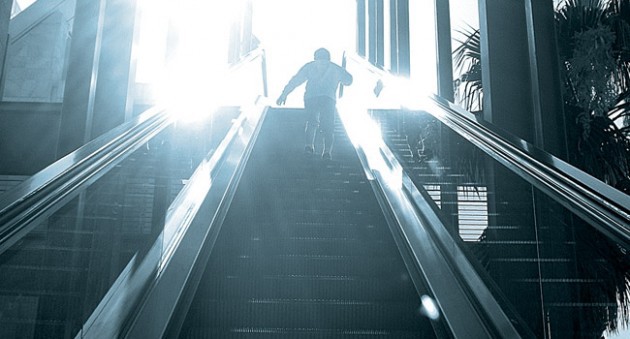The Internet of Things is much more than you can imagine

Wired published an article titled The Internet of Things Is Far One Big Than Anyone Realizes by Daniel Burrus, who is considered one of the most respected authors of future technologies and an expert in innovation. He is the author of the book Flash Foresight, which has become a bestseller according to The New York Times. We offer you a translation of this material.
Speaking of next big thing, people never really think big. And the matter is not in the absence of imagination. The problem is rather a lack of observation. In fact, the future is always close enough to be seen. The future is already here, and it does not need to be invented.
What is the most talked about today? Of course, about the Internet of things, to which they refer (by right or not) almost everything that 1) is connected with machine-to-machine communications (machine-to-machine or m2m); is 2) based on computer calculations and networks collecting data of various types of sensors; 3) mobile, virtual and constantly in touch; and 4) designed to do everything that surrounds us, from street lamps to industrial facilities, “smart”.
What does it mean, “people don't really think big”? In conversations, too much attention is paid to m2m communications, the communication of machines (devices) with other machines (devices). But devices are just a tool, something tangible, that performs a specific set of functions or actions. And when we talk about "smart devices", it is much more important that they are equipped with sensors.
')
The sensor is not a device. The sensor does not perform any actions in the same sense in which the machine does. Sensors measure, evaluate. In other words, they collect data. The true essence of the Internet of things is in the symbiosis of sensors and machines. That is, the real value of the Internet of Things phenomenon is to combine the efforts of machines and sensors to collect and interpret data. All possible information collected from all sensors of the world costs nothing if there is no infrastructure capable of analyzing it in real time.
The key to this should be cloud applications. Without them, the Internet of things simply cannot exist: there will be no one to transmit the collected data and interpret them. It is applications that work for you everywhere and always.
To clarify the idea, we give an example. In 2007, a bridge on a major highway collapsed in Minnesota , resulting in numerous casualties. This happened because the steel structures could not withstand the increased loads. If a smart cement containing sensors capable of monitoring loads, cracks and deformations were used in the construction of the bridge, and to report this to the data center, the tragedy could have been avoided.
And such technologies can be used not only in the construction of bridges. The same sensors could detect the appearance of frost on the road surface and wirelessly report it to your car via the on-board computer. That, in turn, will inform the driver about it and will offer to reduce speed, and if the driver does not follow the advice, he will do it automatically. Thus, sensors in concrete interact with the car in the car, translating information into action. And this is just one example of sensor-machine and machine-machine messages.

It is not difficult to imagine what this can give. What happens if smart cars communicate with each other through a smart city traffic control system? We will get traffic optimization - traffic lights will not work according to preset algorithms, but taking into account the current traffic situation. Drivers will receive up-to-date information about traffic on streets and road conditions, and will be able to either decide for themselves on the use of detour routes, or be guided by tips from a car computer or smart traffic signs and information boards.
So, we have sensors that track a variety of parameters, there are cloud applications that process and transfer the collected data from the machine to the machine, and we have mobile devices with real-time response. Our bridges have become smart bridges, cars - smart cars. Next in line are smart cities and so on.
But what benefits will we get from this? What is the benefit? What industries can these changes affect?
Now we come to the answer to the question of what it means to “think big.” It is important to understand that it is not only what benefit we will get. The point is not at all bridges or even cities. This is a huge, fundamental shift. By making things reasonable, we create a source to create completely new products and services.
Among all the technological trends of the present, the Internet of things is perhaps the most important. It is he who will drastically change our world. In the next 5 years, the largest number of opportunities for growth and development of our entire society will lie precisely here. And how much greater opportunities await us, it is worth talking separately.
Source: https://habr.com/ru/post/363387/
All Articles